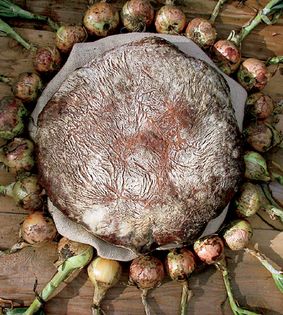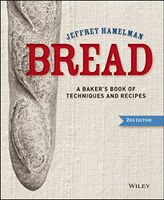Advertisement

Preparation info
- Dough Yield: About
25
loaves at 1.5 lb each - Difficulty
Medium
Appears in
Published 2004
Toward the End of the Eighteenth Century, numerous grain failures had taken a devastating toll on the populations of Europe. People were hungry, civil unrest lurked in the poorer classes of society, and governments were scared. In an effort to fill bellies and keep the peace, attempts were made to develop breads that included other ingredients, from barley and oats to peas to potatoes. Most of those experiments amounted to little, but somehow potato bread found a place of acceptance among b


